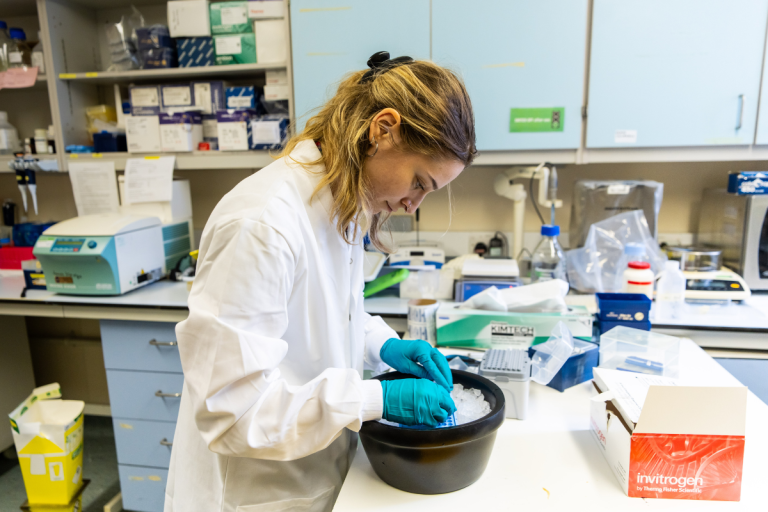Professor Jeremy Henley
PhD: University of Bristol, 2016
Processes controlling the communication between brain cells in Alzheimer’s disease and Down’s syndrome (PhD Studentship)
See glossary at bottom of page for definition of underlined words.
Summary
The neurodegenerative effects of dementia may be caused by incorrect positioning and lack of replacement of AMPA receptors within nerve cells. Nerve cells are responsible for the transmission of signals across the body (AMPA receptors are vital for this process), when this stops functioning cell death occurs. This project aims to characterise the effect of SUMOylation on the positioning of AMPA receptors in the brains of dementia sufferers. If this research successfully implicates the SUMOylation of proteins in neurodegeneration caused by dementia, then this may provide a new therapeutic targets for treating the disease.
What do we already know?
The brain is composed of billions of nerve cells which communicate by sending out chemical signals called neurotransmitters. Neurotransmitters travel across the gaps between cells and interact with receptor proteins on other nerve cells to send them a signal – this junction is called a synapse. AMPA receptors are found at synapses and are involved in receiving fast communication signals in the brain. In the early stages of dementia this signalling between cells goes wrong because AMPA receptors are not correctly positioned to receive neurotransmitter signals.
In normal brain cells, AMPA receptor numbers can be increased and decreased depending on the incoming signals, but in Alzheimer's disease and Down's syndrome too many receptors are removed and not replaced, leading to degeneration of synapses and eventually death of cells in the brain. Those with Down’s syndrome have a tendency to develop dementia at a younger age than the general population.
What is this project trying to find out?
This project aims to investigate what goes wrong with the processes controlling AMPA receptors in dementia, particularly looking at SUMOylation. SUMOylation is the process by which the small protein SUMO is attached to target proteins to change their characteristics. It has a role in controlling the location of AMPA receptors at synapses, and has been implicated in many diseases including cancer, stroke and Parkinson's disease.
How is this being done?
Post-mortem brain samples will be used from Alzheimer's disease and Down's syndrome patients, together with healthy brain samples from subjects of a similar age. The changes in SUMOylated proteins will be profiled using a technique called monoclonal antibody-based affinity chromatography, where proteins that have SUMO attached can be isolated from other proteins. The proteins isolated can then be analysed to see how the level of SUMOylation changes, and if there are any changes in which proteins are SUMOylated in diseased brains.
Why is it important?
If we know some of the signalling proteins or pathways which are disrupted in dementia, this will allow them to be specifically targeted by therapies which may help to prevent synapse degeneration and cell loss in the brain.
Glossary
Neurodegeneration – The death of cells in the brain (neurons). Neurodegeneration is a characteristic sign of dementia related diseases.
SUMOylation – Small protein SUMO is attached to other proteins to change their characteristics
Therapeutic targets – A therapeutic target is the protein / receptor that a pharmaceutical drug will bind to in order to elicit its effect.
Neurotransmitters – Any substance, such as acetylcholine or dopamine, responsible for sending nerve signals across a synapse between two neurons.
Receptor proteins – A protein which binds a specific molecule strongly.
Stroke – A blood clot in the brain leading to inadequate blood supply and cell death in a localised region of the brain.
Antibody – A large protein which is able to specifically bind a certain molecule (known as an antigen).
Chromatography – A technique for the separation of complex mixtures based on the different properties of the constituent parts.
Please click here for more information about the work of Professor Jeremy Henley.
Share this page




